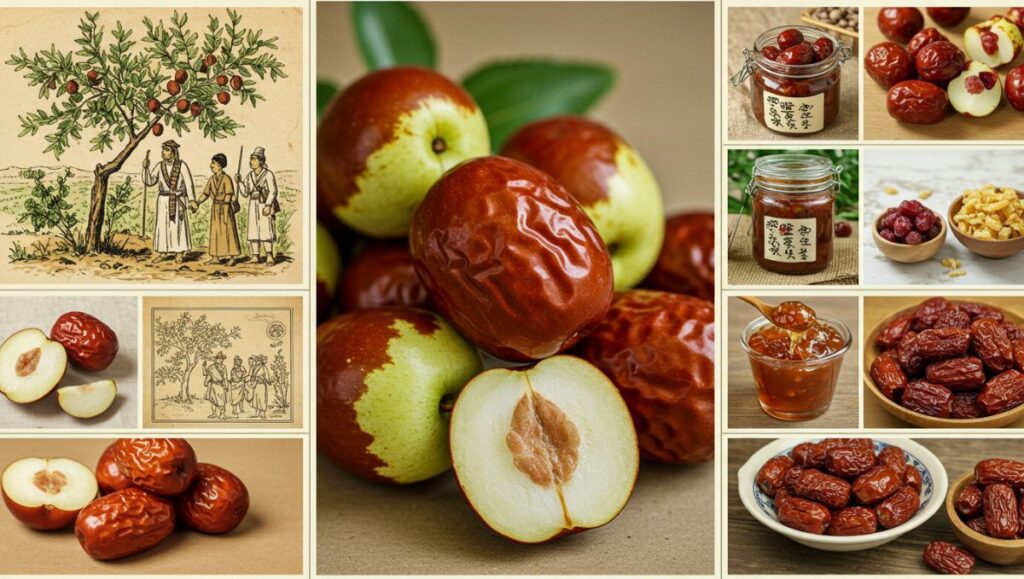Žižole, known in English as jujube, is a small, oval fruit with a sweet and tangy taste that has nourished people for thousands of years. While it is native to China, žižole has traveled far, taking root in Mediterranean climates where it thrives under sunny skies and warm breezes.
From fresh snacks to dried delicacies, žižole is celebrated for its health benefits, versatility, and cultural significance.
The Origins of Žižole
The story of žižole begins in ancient China, where historical records date its cultivation back more than 4,000 years. Traders and travelers along the Silk Road carried the fruit westward, introducing it to the Middle East and eventually to Southern Europe.
In Croatia and parts of Italy, the fruit found a perfect home. Known locally as žižole, it became a seasonal treat and a symbol of autumn abundance.
Appearance and Taste of Žižole
Žižole resembles a small date or olive. When ripe, its skin turns from green to a rich reddish-brown, and the texture varies depending on ripeness:
-
Fresh and greenish: Crisp and apple-like.
-
Fully ripe: Soft, sweet, and slightly chewy.
-
Dried: Wrinkled skin with intensified sweetness, reminiscent of dates.
Its flavor is a balance between apple, pear, and date, making it appealing to a wide range of palates.
Nutritional Profile of Žižole
Žižole is more than just a tasty snack—it’s a nutrient powerhouse:
-
Vitamin C: Boosts immunity and supports skin health.
-
Antioxidants: Help protect cells from damage.
-
Potassium: Supports heart health and fluid balance.
-
Dietary fiber: Aids digestion and promotes satiety.
Because it’s naturally sweet yet low in calories, žižole is a healthy alternative to processed snacks.
Cultural Significance of Žižole
In the Mediterranean, žiž-ole is not only food—it’s part of tradition. In Dalmatia, the arrival of autumn means locals gather to enjoy the fruit fresh or to preserve it for winter.
In Chinese culture, jujube (žižole) is a symbol of good fortune and fertility, often included in wedding banquets and festive dishes.
Žižole in Traditional Medicine
For centuries, žiž-ole has been valued in herbal remedies:
-
Chinese medicine: Used to soothe the mind, improve sleep, and strengthen the immune system.
-
Mediterranean herbalism: Brewed into teas to ease sore throats and calm digestion.
Modern research is beginning to explore these traditional claims, with studies suggesting potential benefits for reducing stress and improving overall well-being.
How to Enjoy Žižole
There are many ways to enjoy žiž-ole, depending on preference and season:
-
Fresh: Washed and eaten raw, perfect as a snack.
-
Dried: Chewy and sweet, great for trail mixes or baking.
-
Candied: Coated in syrup for a festive treat.
-
Tea infusion: Dried žiž-ole simmered in water with ginger and honey.
Its versatility makes it a favorite for both sweet and savory recipes.
Popular Recipes with Žižole
In regions where žiž-ole is common, creative recipes showcase its unique flavor:
-
Žižole jam: Sweet spread for bread and pastries.
-
Stuffed žižole: Filled with nuts and honey for a dessert bite.
-
Autumn salads: Fresh slices mixed with nuts, cheese, and greens.
-
Slow-cooked stews: Dried žižole adds a mild sweetness to meats and legumes.
Harvesting Žižole
Žiž-ole trees produce fruit from late summer into autumn. The harvest period is crucial—pick too early, and the fruit is tart and hard; too late, and it becomes overly soft. In traditional farming communities, the harvest often turns into a social activity, with families gathering to collect the fruit together.
Storing and Preserving Žižole
-
Fresh: Keep in a cool, dry place for up to a week.
-
Refrigerated: Extends freshness for two weeks.
-
Dried: Can last for months when stored in airtight containers.
Drying concentrates the flavor, making žižole a convenient pantry staple.
Growing Your Žižole
Žiž-ole trees are hardy and adaptable, thriving in well-drained soil and full sun. They can tolerate drought, making them suitable for Mediterranean climates and arid regions. With minimal maintenance, a tree can produce abundant fruit each year, making it a rewarding choice for home gardeners.
Žižole in Modern Food Trends
In recent years, žiž-ole has caught the attention of nutritionists and food enthusiasts worldwide. Its natural sweetness, combined with impressive health benefits, fits perfectly into the growing demand for superfoods. Smoothies, health bars, and even gourmet restaurant desserts now feature žiž-ole as a premium ingredient.
Sustainability and Žižole Farming
Because žiž-ole trees require little water and resist many pests, they are an environmentally friendly crop. Sustainable farming methods ensure that production remains eco-conscious, supporting biodiversity and reducing the need for chemical interventions.
Health Precautions
While žiž-ole is generally safe for most people, those with certain conditions—such as low blood sugar—should consume it in moderation, as it can have mild blood sugar-lowering effects. Always consult with a healthcare professional if you plan to use it as part of a medicinal regimen.
Žižole in Festivals and Markets
In Mediterranean towns, žiž-ole often appears at autumn markets and harvest festivals. Vendors offer baskets of fresh or dried fruit, jams, and homemade sweets. In some areas, there are even žiž-ole-themed events celebrating the seasonal bounty.
Why Žižole Deserves Global Recognition
Despite its long history, žiž-ole remains relatively unknown in many parts of the world. With its blend of great taste, rich nutrition, and cultural heritage, it deserves a place alongside better-known fruits like figs, dates, and pomegranates. Its versatility means it can adapt to modern eating habits while retaining its traditional charm.
Conclusion
Žižole is more than just a fruit—it’s a link between cultures, a nutritional powerhouse, and a culinary treasure. Whether enjoyed fresh under a Mediterranean sun, brewed into a soothing tea, or incorporated into a modern gourmet dish, žiž-ole offers a unique taste of history and health.
As global interest in natural, sustainable foods grows, žiž-ole is poised to shine far beyond its traditional roots.







